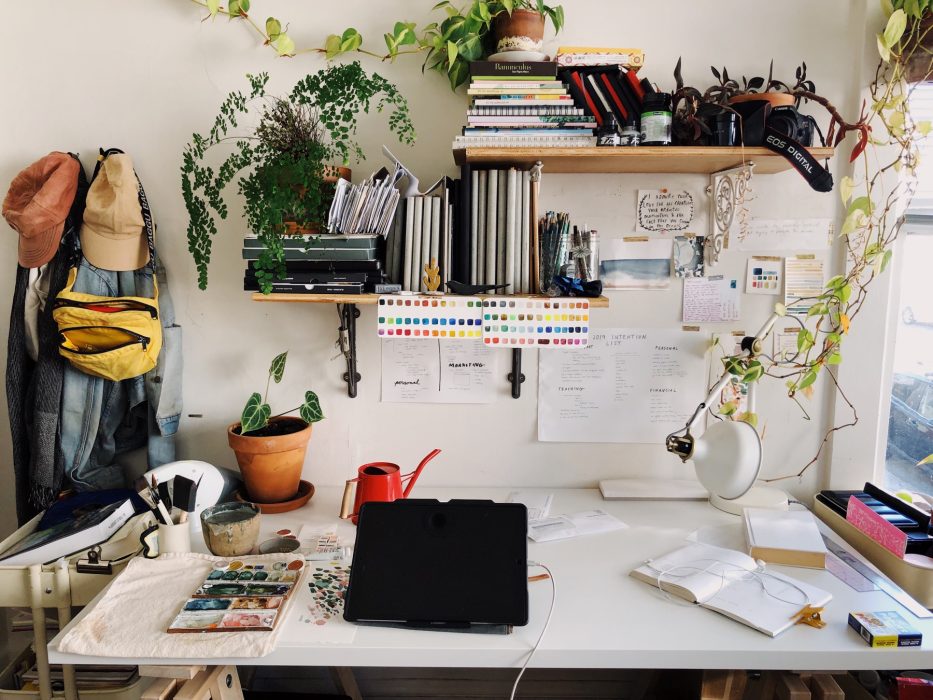Catapult Catapult Artist
Trust the Process: Linsday Stripling, Catapult Artist for July 2019
I think what I love about illustration is that there are so many ways to challenge myself.
As part of our Catapult Artist program, Nicole Caputo, Catapult ’ s creative director, sits with July’s #CatapultArtist for a conversation on art, creativity, and the artist’s life.
It was such a pleasure working with Lindsay as our Catapult Artist for July! When I first came across her work I was drawn to her use of bold color and her whimsical style. The smaller details and “illustration within the illustration” present in some of the artwork she has created for Catapult lent a gorgeous, reflective, and personal quality to each piece that I have really enjoyed. We are so pleased with everything she created for the magazine this past month.
Nicole Caputo: Take us through a day as an illustrator! What does a typical morning look like for instance?
Lindsay Stripling: Mornings usually start with an early workout, then I come home and do typical morning rituals, like make coffee and have breakfast. I usually like to sit down and do some writing and a little reading for about a half-hour before starting work, ideally at 8 a.m. All of this varies, though, because illustration work oftentimes comes with last-minute deadlines and requires fast turnaround times, so some mornings start later or are hectic depending on whether or not I worked late the night before. Usually, I like to handle admin work early, so emails and bookkeeping come first. I then take a break to walk my dogs. On a good day, I spend the afternoon on more creative endeavors. It’s always a little different day-to-day but I think that’s what I like most about what I do.
Who have your mentors been and what did they do or say that inspired, moved, or motivated you most?
My mentors have been friends and teachers who I’ve watched forge their own creative careers. I am not thinking of any specific thing I’ve been told, but a good piece of advice is to trust the process. The more I remember that, the easier it is for me to handle frustrating days, weeks, or months in the studio, because ultimately, they always end with me learning something and breaking through the fog if I just keep pushing forward.
Image courtesy of Lindsay Stripling
How did you get started as an illustrator?
It took me a while to find my footing in illustration. I didn’t study it in school. I studied painting and photography and I didn’t think illustration was an option until much later. I was in my late 20s when I realized that I could get hired for my creative work and that I didn’t only have to do ‘shows’ and pray people would buy my paintings!
Can you tell us a bit about your process (desired medium included) from start to final execution?
My process typically involves some brainstorming, then sketch work, and then finals once the sketches get approved. I like a few different mediums—which one I use really depends on the scope of the project. If the time frame allows, I love using watercolor or gouache on paper, but if I’m working with a fast turnaround it’s easier for me to work digitally because I can quickly change aspects of the drawing.
Are there any topics that you are particularly drawn to in regards to commissioned illustration work?
No! I am always up for a challenge, and I think what I love about illustration is that there are so many ways to challenge myself! I do love trying to figure out how to tell a story in my work that enhances the writing paired with it, but I am also trying out product illustration right now and am having a lot of fun incorporating lettering.
Image courtesy of Lindsay Stripling
What do you do for fun that perhaps inspires your art practice, but that is a completely separate activity?
I love cooking, and I am currently moving to a house with a yard and can’t wait to start gardening. I’m not sure if either influence my work, but I find it helps to do things that allow time for my ideas to form, so while I am keeping busy with cooking or going for a walk my mind can wander and make connections it might not otherwise make.
Illustration by Lindsay Stripling for Catapult
How long did it take you to land your first commissioned job? What was the job?
A year or two passed between the time I decided I wanted to do illustration to the time I landed my first job. I floundered around a bit before realizing I just needed to make the work I wanted to be hired for. My first hired job was doing a mural for a local bookstore. My neighbor was the manager and it was so fun!
And lastly, what tips would you give to emerging illustrators?
Make friends with other people in your field. There are more than enough opportunities for creatives. Being friendly, open, and generous not only helps you. It encourages others to help you too. Also, just keep making!



